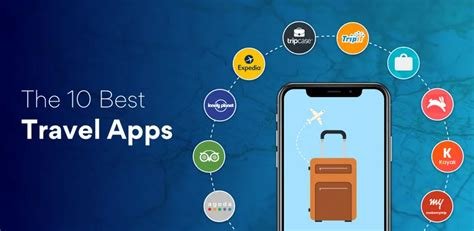This blog post titled ‘How to Experience Art and Culture in Los Angeles on a Budget’ serves as a comprehensive guide for budget travelers eager to dive into LA’s vibrant arts scene. It introduces readers to various facets of art and culture in the city and provides tips on how to plan an enriching adventure without overspending. The article highlights affordable museums that offer incredible experiences, showcases local art galleries as hidden gems worth exploring, and discusses the vibrant street art that adorns the city. Additionally, it focuses on free cultural events, ensuring that visitors can enjoy a wealth of experiences without breaking the bank. The key takeaways at the end offer insightful recommendations for maximizing one’s cultural journey in Los Angeles. This guide is a must-read for anyone looking to embrace the artistic spirit of LA while sticking to a budget.
Exploring Art And Culture: An Introduction To Los Angeles
Los Angeles is a vibrant city teeming with creativity, making it a paradise for art enthusiasts and cultural aficionados. For those wondering how to immerse themselves in this artistic landscape without breaking the bank, there are myriad options available. From world-renowned museums to local art scenes, LA offers experiences that cater to every taste and budget, ensuring that you don’t have to compromise on quality for affordability.
One of the most appealing aspects of LA’s art and culture scene is its accessibility. Many institutions offer free admission days, making it easy for visitors and residents alike to explore art offerings without spending a dime. Additionally, there are countless public art installations and community events that can enrich your cultural experience while keeping your wallet intact.
- Top Reasons To Experience LA’s Art Scene
- Diverse Artistic Expressions: From classical to contemporary, there’s something for everyone.
- Free Events and Exhibitions: Many galleries host no-cost openings and outdoor events.
- Community Engagement: Local artists often collaborate with neighborhoods to create unique installations.
- Exploration Opportunities: Street art and murals are everywhere, adding vibrancy to the cityscape.
- Support Local Talent: Discover emerging artists in small galleries and pop-up exhibitions.
- Inclusive Culture: Events and experiences that celebrate diverse communities are commonplace.
Furthermore, how to navigate the various cultural offerings can be simplified by planning ahead. Researching the best times for museum visits, attending local art walks, or checking community boards for events can significantly enhance your experience. By being informed, you can easily tailor your visits to suit your preferences and ensure that every outing is both enjoyable and enriching.
How To Plan Your Art And Culture Adventure In LA
When it comes to experiencing the vibrant art and culture scene in Los Angeles, having a budget doesn’t have to limit your adventure. In fact, the city is teeming with opportunities that don’t cost a dime or are very affordable. With a little planning and creativity, you can dive into the rich tapestry of artistry that LA offers. Here’s how to make the most of your journey into the world of art without breaking the bank.
To ensure you have an enjoyable experience, it’s essential to have a structured approach. Start by outlining your interests, from modern art to cultural festivals. This will help you identify the right events and locations to explore. Don’t forget to incorporate some essentials into your preparation. Consider following these Steps To Organize Your Budget-Friendly Adventure:
- Research free events available during your visit.
- Make a list of budget-friendly museums and galleries.
- Connect with local art communities and groups online.
- Plan your itinerary based on proximity to save on transportation.
- Utilize public transport to navigate the city efficiently.
- Check for discounts or deals on tickets in advance.
- Keep an open mind to spontaneous discoveries!
Understanding where to find affordable cultural events in LA can turn your excitement into reality. Many neighborhoods host art walks, gallery openings, and cultural festivals regularly. These events not only allow you to see exceptional work but also provide opportunities to engage with art lovers and creators alike. Local favorites often keep an updated online calendar of events, so be sure to explore those resources.
Finding Affordable Cultural Events
To further enhance your adventure, immerse yourself in the community vibe through local bulletin boards and social media pages. You might discover exclusive openings, workshops, and free performances that can shape your itinerary. Follow the LA art scene influencers or hashtags to stay informed about happenings in real-time. This connection to the art community can lead to unexpected and enriching experiences on your journey.
Connecting With Local Artists
One of the most vibrant aspects of the LA art scene is its community of artists who are often eager to share their work and passion. Engaging with local artists can provide an intimate perspective of their crafts and motivations. Visit local studios, join workshops, or participate in community art events where you can network and even collaborate.
The beauty of art lies in its ability to connect people from diverse backgrounds. By fostering these relationships, you not only enrich your experience but also support the vibrant culture of Los Angeles.
By strategically planning and actively seeking out enriching experiences, you can make the most of your art and culture adventure in Los Angeles. Embrace the local scene, engage with artists, and enjoy the myriad of free or low-cost events that make LA a unique cultural hub.
Affordable Museums: Must-Visit Spots For Budget Travelers
When exploring the vibrant city of Los Angeles, art and culture enthusiasts can enjoy world-class museums without breaking the bank. Knowing how to navigate the local cultural scene allows budget travelers to immerse themselves in the rich history and creativity that Los Angeles has to offer. With numerous affordable options, visitors can experience remarkable collections and exhibitions at a fraction of the cost typically associated with such experiences.
Many museums in Los Angeles offer discounted or free admission days, allowing you to stretch your budget even further while enjoying a wide range of artistic expressions. Planning your visit around these opportunities is essential for maximizing your experience while minimizing costs. Consider checking the museums’ websites for special events or promotions that can enhance your visit without additional expenses.
- Top Affordable Museums In Los Angeles
- The Getty Center – Offers free admission and stunning views.
- The Los Angeles County Museum of Art (LACMA) – Free admission on certain days.
- The California Science Center – General admission is free, with an array of exhibits.
- The Museum of Contemporary Art (MOCA) – Free admission for specific days each month.
- The Natural History Museum – Affordable general admission fees.
- The Skirball Cultural Center – Offers free admission on certain days or times.
- The Autry Museum of the American West – Lowered rates for special days and family packs.
By targeting these affordable museums, visitors can enjoy a diverse array of exhibits that cater to different interests. Whether it’s the breathtaking art at The Getty Center or the interactive displays at the California Science Center, budget travelers have an array of options at their fingertips. Make sure to allocate time in your itinerary for each museum, as they provide unique perspectives on history, culture, and creativity.
Exploring affordable museums not only enriches your travel experience but also allows you to appreciate the artistic heritage of Los Angeles without financial strain.
Among the myriad of options available, understanding how to strategically plan your museum visits can lead to a fulfilling cultural experience. Connecting with fellow travelers and locals who share your passion can also help you uncover other hidden gems throughout the city. Take your time to marvel at the creativity that Los Angeles has to offer, even when traveling on a budget.
Local Art Galleries: Hidden Gems To Discover
When it comes to experiencing art on a budget in Los Angeles, local art galleries present a fantastic opportunity. These spaces often showcase up-and-coming artists and unique artworks that you won’t find in larger, more commercialized venues. Moreover, visiting these galleries can enhance your understanding of the local culture, offering insights into the community’s artistic movements and narratives.
Exploring lesser-known galleries also provides a sense of adventure. Unlike crowded museums, local art spaces often have a welcoming atmosphere, making it easier to engage with both the art and the artists themselves. This intimate environment allows for deeper discussions and a more personal connection to the works displayed. As the vibrant local art scene thrives, these gems become essential stops on any art lover’s itinerary.
Benefits Of Visiting Local Art Galleries
- Access to unique, original artworks from emerging artists.
- Affordable pricing, often allowing for budget-friendly purchases.
- Opportunities to meet the artists and learn about their creative processes.
- Less crowded, providing a more intimate viewing experience.
- Exclusive events, such as openings and artist talks.
- A chance to support the local economy and art community.
Additionally, many local galleries are located in vibrant neighborhoods filled with other artistic endeavors, such as street art and public installations. This makes it simple to integrate a gallery visit into a broader exploration of the area’s cultural offerings. By taking the time to seek out these hidden gems, you are not just appreciating art; you are participating in a rich dialogue that enriches your *how to* experience in Los Angeles.
Discovering art in the heart of Los Angeles shouldn’t feel intimidating or financially burdensome. Embrace the local scene and let it surprise you!
Exploring Street Art: Culture On The Go
Los Angeles is a vibrant canvas where creativity thrives on every corner, showcasing a rich tapestry of street art that reflects the city’s unique cultural identity. One of the most exciting aspects of this urban art experience is its accessibility—many of the stunning murals and graffiti are free to view. As you delve into the world of street art, how to navigate this dynamic scene becomes essential, ensuring you maximize your exploration without straining your budget.
A great way to start your adventure is by planning your route strategically. Many famous pieces are scattered throughout different neighborhoods, each offering a distinct flavor of artistry. From iconic murals to smaller, hidden gems, discovering these artistic expressions can provide a glimpse into the stories that define Los Angeles. Be sure to take your time, absorb the atmosphere, and engage with the local art community, as they can provide deeper insights and often point you to lesser-known works that may not be on the typical tourist radar.
Steps To Navigate LA’s Street Art Scene
- Research popular street art neighborhoods.
- Download street art maps or apps for guidance.
- Follow local street art blogs for updates and events.
- Join art walks or guided tours for expert insights.
- Engage with artists during community events.
- Take plenty of photos and share them with hashtags.
- Explore beyond the main sites for hidden treasures.
Incorporating street art into your cultural journey in Los Angeles is not only budget-friendly but also deeply enriching. Many artists convey potent messages about social issues, personal experiences, and community pride through their murals, making every piece a conversation starter. As you wander through the streets, take a moment to appreciate the skill and thought that goes into each artwork, and consider how they contribute to Los Angeles’ diverse narrative.
Famous Street Art Locations
When you think of street art in Los Angeles, certain locations are iconic for both their artistry and the stories they tell. Areas like the Arts District and Melrose Avenue are home to some of the most recognized murals. In the Arts District, vibrant colors and innovative designs come to life on walls while surrounding cafes provide a perfect spot to relax and reflect on the art around you. Melrose Avenue offers a combination of commercial and creative vibes, making it a prime hotspot for street art enthusiasts. Don’t forget to explore off the beaten path as well, because sometimes, the hidden murals tell the best stories.
Free Cultural Events: Maximize Your Experience
When learning how to immerse yourself in Los Angeles’ vibrant culture, attending free cultural events is an essential strategy. These events not only introduce you to local artists and musicians but also offer a sense of community within the city’s diverse neighborhoods. From festivals celebrating specific cultural heritages to open-air concerts, there’s something for everyone in this bustling metropolis.
To ensure you make the most of your experience, it can be helpful to keep a calendar of events that interest you. Check community centers and online platforms for updated schedules, so you never miss out on a unique opportunity. Participating in these festivities allows you to appreciate the rich history and artistry of Los Angeles while sticking to your budget.
Types Of Free Cultural Events To Check Out:
- Art walks featuring local artists
- Outdoor film screenings in parks
- Food and music festivals celebrating local cuisines
- Street performances and busking events
- Public art installations and exhibitions
- Cultural parades showcasing diverse traditions
- Community classes and workshops on various art forms
Furthermore, engaging with fellow attendees adds a social dimension that enriches the experience. Don’t hesitate to strike up conversations with artists and participants; they can provide insights and stories that deepen your understanding of the art and culture presented. Ultimately, exploring free cultural events is a fantastic opportunity for both art appreciation and personal connection without the pressure of spending a lot of money.
Key Takeaways For Experiencing LA’s Arts Scene
Los Angeles boasts a vibrant arts scene that is accessible even on a budget. Understanding how to maximize your experience can lead you to fantastic opportunities that might otherwise be overlooked. How to navigate the extensive variety of options available will ensure you feel enriched without feeling financially strained. Those willing to explore can discover a myriad of cultural experiences across the city.
A crucial aspect of enjoying LA’s arts scene is knowing about the various free resources available. Many local galleries and artists host events that are open to the public, providing you with unrestricted access to the creative community. Be proactive in seeking out these opportunities; look for community calendars and social media announcements that might lead you to hidden gems, such as pop-up exhibitions and neighborhood art walks.
Engaging with the local arts scene can be an unforgettable experience, especially when you discover unique talent right in your neighborhood.
To make your visit even more fulfilling, consider the following Actionable Tips For A Budget-Friendly Cultural Experience:
- Check out free museum days and discounted tickets for student and senior citizens.
- Utilize public transportation to save on parking and travel costs.
- Attend local art fairs and markets to support emerging artists while enjoying live performances.
- Participate in free workshops and talks that many art institutions offer.
- Follow local art groups on social media for last-minute event notifications.
- Explore artist collectives that provide open gallery nights.
- Search for community-driven festivals that celebrate art and culture.
By utilizing these strategies, you can deepen your understanding and appreciation of Los Angeles’ arts scene. Moreover, keep an open mind and be adventurous in your exploration. The city’s cultural landscape is always evolving, presenting new experiences that align with your interests and budget. Ultimately, knowing how to seek out and embrace these opportunities will lead to memorable and enriching encounters with art in LA.
Frequently Asked Questions
What are some affordable ways to experience art and culture in Los Angeles?
There are many budget-friendly options, including visiting affordable museums, exploring local art galleries, attending free cultural events, and discovering street art throughout the city.
How can I plan my art and culture adventure in LA without overspending?
Start by researching free or low-cost events, creating an itinerary that includes must-see museums and galleries, and checking for any special free admission days or discounts available at venues.
Which museums in Los Angeles offer affordable admission fees?
Some must-visit museums with budget-friendly options include The Getty Center, Los Angeles County Museum of Art (LACMA) on certain days, and The Broad, which is free but requires a reservation.
What local art galleries should I consider visiting while in LA?
Look for hidden gems like the Hammer Museum, 18th Street Arts Center, and various pop-up galleries in areas like Downtown LA or the Arts District, which often feature emerging artists.
Where can I find street art in Los Angeles?
Street art can be explored in neighborhoods such as the Arts District in Downtown LA, Melrose Avenue, and Echo Park, where vibrant murals and installations offer a cultural experience on the go.
What types of free cultural events are available in Los Angeles?
Los Angeles hosts a variety of free cultural events, including outdoor movie screenings, art walks, live music performances, and community festivals that celebrate the city's diverse heritage.
How can I maximize my experience of LA’s arts scene while keeping my budget in mind?
Prioritize free events, plan visits to museums during free admission days, use public transport for cost-effective travel, and follow local arts organizations on social media for the latest updates on free opportunities.
What are the key takeaways for experiencing art in Los Angeles on a budget?
To fully enjoy LA's art scene on a budget, take advantage of free and discounted admissions, explore local galleries and street art, attend community events, and engage with the city’s vibrant culture without breaking the bank.









